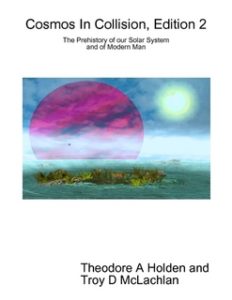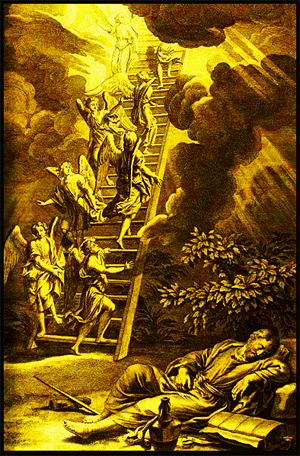 The violent flaring of Saturn into a polar sun brought mankind into its fabled Golden Age. A translucent stairway now reached all the way to heaven, a pillar of auroral light that was the Earth’s Axis Mundi – and with it came death and destruction.
The violent flaring of Saturn into a polar sun brought mankind into its fabled Golden Age. A translucent stairway now reached all the way to heaven, a pillar of auroral light that was the Earth’s Axis Mundi – and with it came death and destruction.
(continued from A Timeless Age in a Purple Haze)
The extreme earthquake activity and climatic changes brought about by Saturn’s sudden increase in radiated energy would also have resulted in the intensification of the invisible electrical plasma currents spanning the distance between the two bodies (called Birkeland currents today and largely responsible for the aurora borealis). As a result, there would have been the sudden manifestation of auroral activity at the Earth’s poles, unseen before Saturn’s flare-up, followed by electrical arcing displays into space towards the new polar sun.
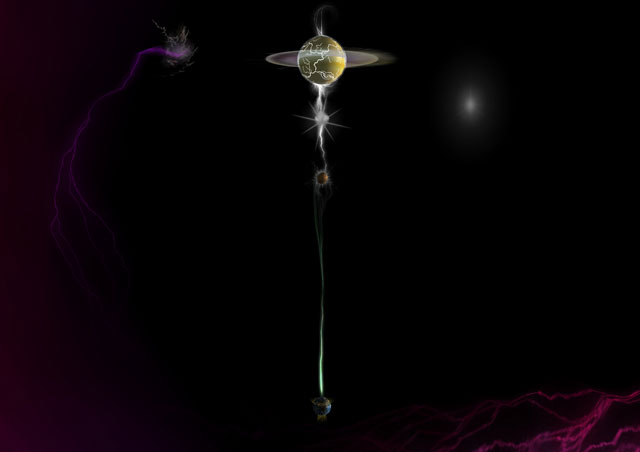
An impression of the electrical effects on the Saturn system as its plasma sheath came into contact with the Sun’s heliosphere. An intensification of electrical discharges would have resulted in giant inter-planetary electrical arcing with the violent expulsion of a body from Saturn which would ultimately become Venus. Birkeland currents would produce intensified auroral activity on Earth and stretch towards Mars and Saturn producing a pillar-like effect when seen from Earth’s surface. Saturn’s previoulsy opaque plasma sheath would have started to equalise with the Sun’s heliosphere and become transparent. The Sun could now be seen as a dim star approaching from the East. (image not to scale)
Due to Saturn’s polar position in the heavens, a mound of water would have previously formed at the north pole due to Saturn’s gravitational effect (in the same way that the Moon today affects tides, but in a stationary way). The sudden flaring of Saturn would have disrupted this gravitational pull and released the mound of water where it would have spread out destructively over the northern hemisphere.

A bubble of water held in place by Saturn’s gravitational pull would have been released when that gravitational pull was disrupted by Saturn’s flaring. The water would then have spread out over the northern hemisphere in a cataclysmic deluge.

Mammoths in a warm sub-temperate Siberia caught in the deluge created by the collapse of the water bubble previously held up at the north pole by Saturn’s gravitational pull. An intense Birkeland current can be seen amidst enhanced auroral activity. It stretches up to the flaring Saturn as the mammoths’ nocturnal world comes to a brightly-lit end.
The extinction of the mammoth: By Charles genenthal
Due to the twisting nature of the Birkeland current connecting Earth with its polar sun, a giant hurrican-like event would then build at the north pole. Replacing the previous mound of polar water, this swirling mass of plasma would still suck up vast amounts of water into the atmosphere only to send it crashing back down to earth with every future disruption of Earth’s electrical link to Saturn. The resulting deluges plagued those species living at the higher latitudes of the northern hemisphere.
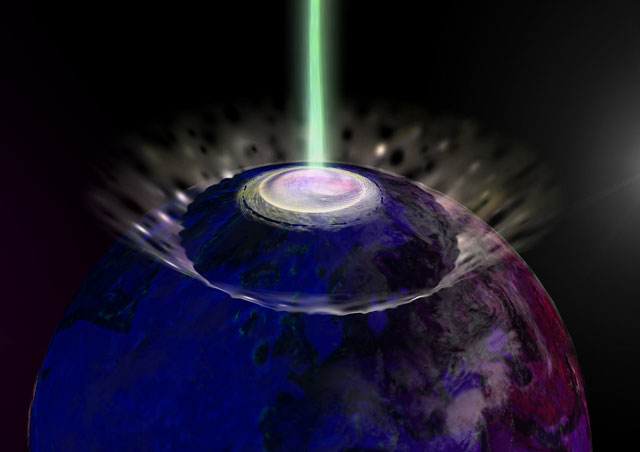
The twisting and intensified Birkeland current connecting Earth with Saturn would have produced a polar vortex while supporting dense auroral activity around the Arctic circle. The encroaching light from the Sun would add a greener spectrum of light reaching the earth’s surface that would have started the process of changing Earth’s vegetation to a predominantly green hue. Human’s on Earth would have also experienced night and day for the first time.
Add to this a sudden and heavier change in Earth’s gravity due to the electrical changes in the flaring brown dwarf star and you have the first of a series of major extinction events for the larger and now much more heavier species of the planet. Those unable to adapt to a non-nocturnal environment woud also come under pressure to survive.
At this same time the continued aurora-like Birkeland plasma activity at the Earth’s north pole would have begun to manifest itself into a virtual stairway of light, seen as a tapering beam of translucent light reaching all the way up to the flaring Saturn.
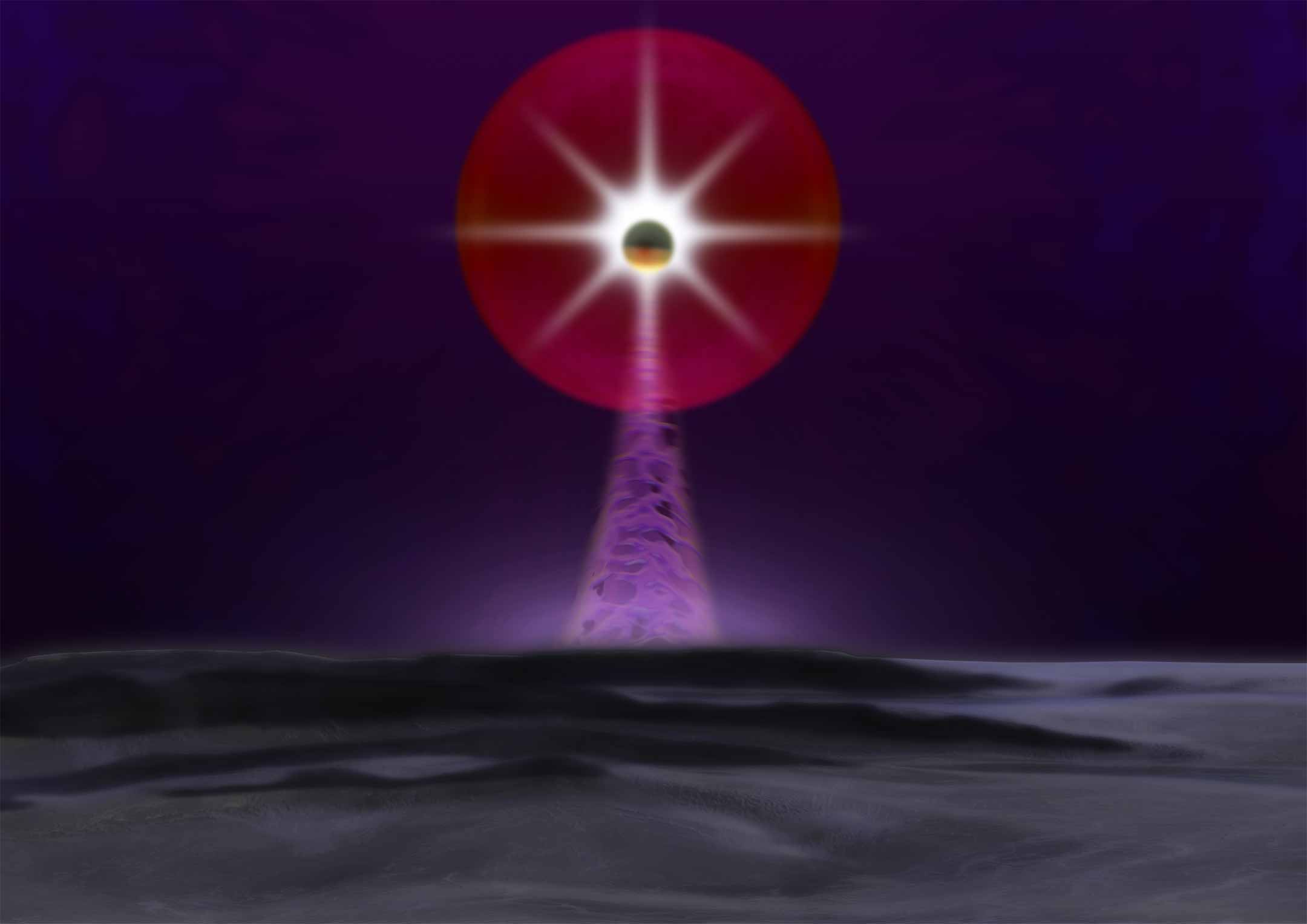
The formation of the Axis Mundi soon after Saturn’s flare-up and before the creation of its rings. The tapering appearance of the Axis Mundi lent itself to the illusion of a ladder reaching up towards the heavenly abode of Saturn.
Taking on various shapes as it fluctuated over time, this translucent connection between Earth and its heavenly godstar would eventually be remembered as Jacob’s Ladder, the Stairway to Heaven and the Tree of Life, amongst other things.
In fact, screeds and screeds of rock art from around the world record the many manifestations of this pillar of light, often in the shape of a squatting stick figure with its arms held aloft (more on this in the next section).
Spiraling ladders and eight-pointed star burst patterns were also featured in ancient petroglyphs. The Axis Mundi was now established as the dominant feature in ancient skies.
The Appearance of Saturn’s Rings
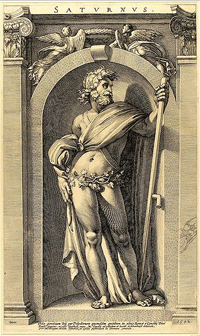 As the blackened debris that formed the black spirals of the Chaos Monster dissipated (see previous page) a halo of discharged water from Saturn could be seen circling Saturn’s orb and settling into a series of rings. These rings took on the look of concentric bands eventually numbering seven in total. They harken to the account of ‘Seven Days of Creation’.
As the blackened debris that formed the black spirals of the Chaos Monster dissipated (see previous page) a halo of discharged water from Saturn could be seen circling Saturn’s orb and settling into a series of rings. These rings took on the look of concentric bands eventually numbering seven in total. They harken to the account of ‘Seven Days of Creation’.
(Important Question: Did the ancients know Saturn had rings before the invention of the telescope? For a study on references to Saturn’s rings in the ancient world, go here.) In the image of Saturn by Caravaggio to the left, note the encircling vines around the god’s hips.
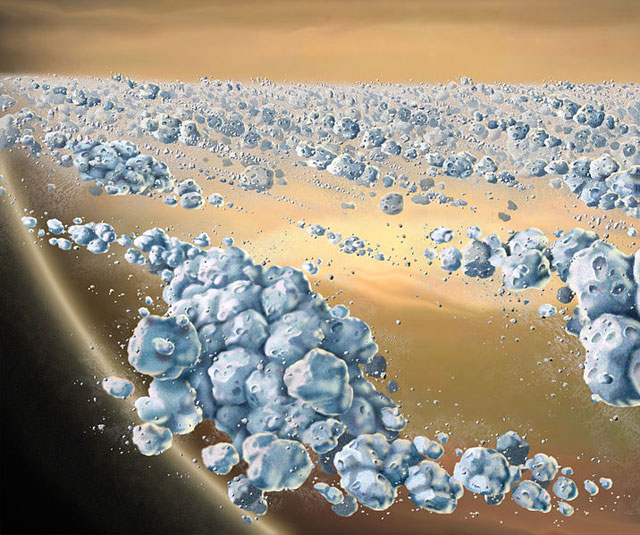
An artist’s impression of the iced water agregates that make up Saturn’s famous ring system. (credit NASA)
At about this time Saturn’s formerly impenetrable plasma sheath dissipated as it equalised with the Sun’s heliosphere. This now allowed the brightest stars in the galaxy to now be seen from Earth. The brightest by far of these was the Sun, at that time still a distant yet growing light that rose in the East and set in the West.
Though Saturn still shone as its own sun, the arrival of the Sun and its ability to shed light through Saturn’s plasma sheath now meant the Earth experienced the phenomenon of day and night. Up to nine new smaller celestial bodies could also now be seen orbiting Saturn while the planet’s new rings were now illuminated from the side by the Sun’s more powerful light. This made them appear as crescents that spun cyclically around Saturn’s circumference when seen at different times during Earth’s rotation. The result for life on Earth would never be the same again.
Man could now calculate time.
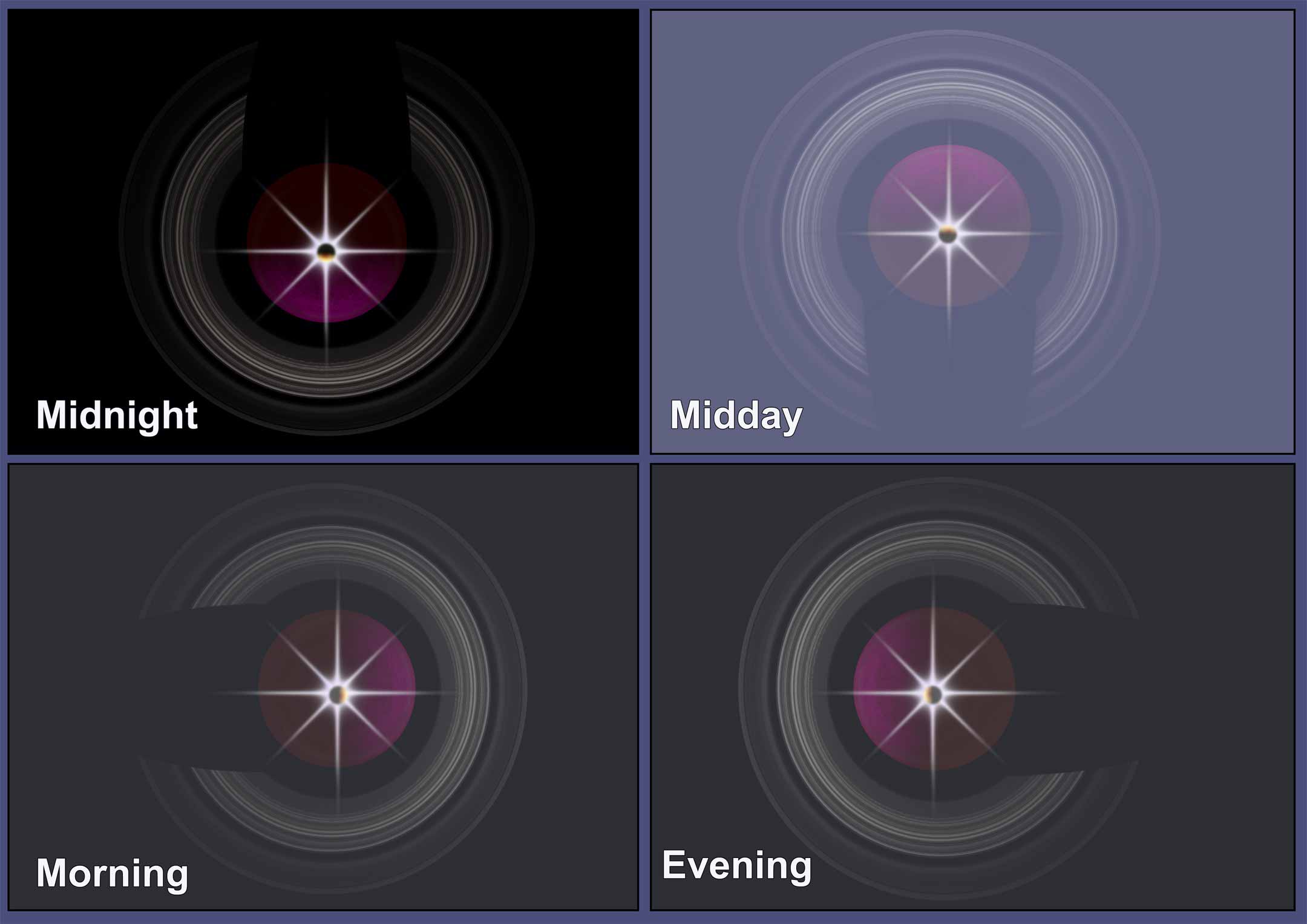
Illuminated by the approaching Sun as a crescent, Saturn’s newly formed rings could now be used to tell the time of day.
The Saturnian system was now established. In the ancient world Kronos now ruled the heavens.
The Golden Age had arrived.
(continue on to The Golden Age)

